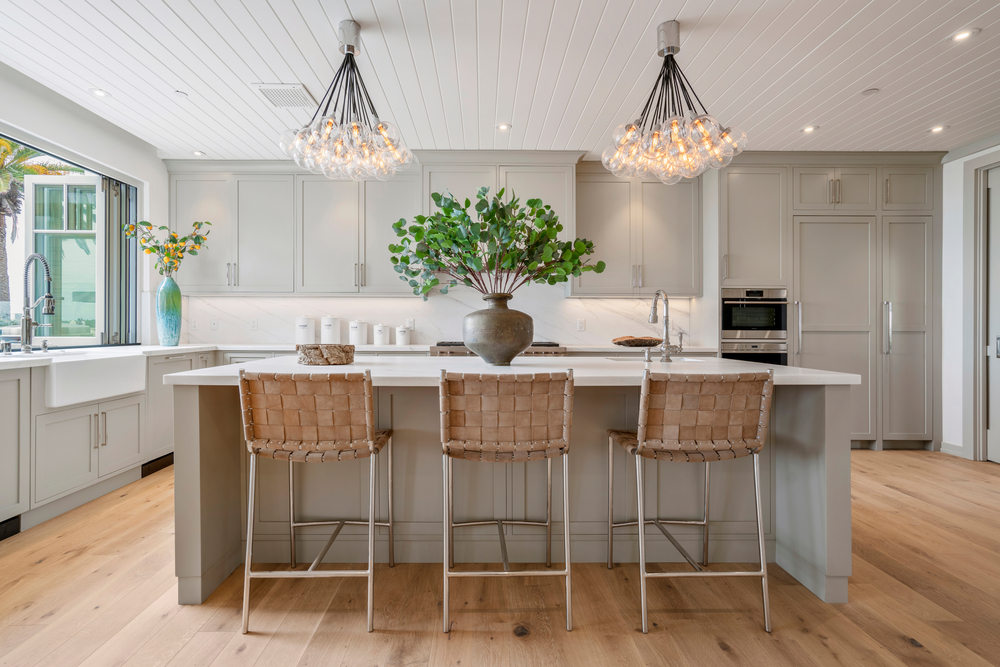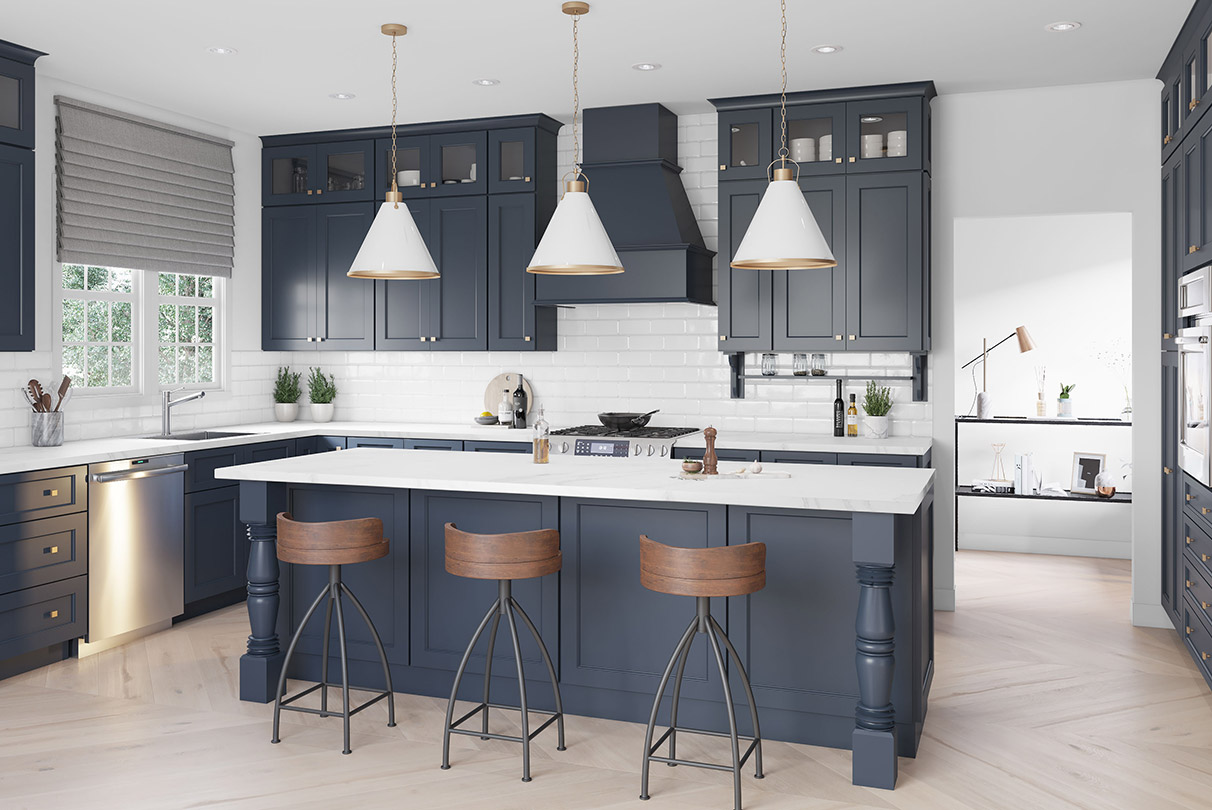A kitchen island can be an incredibly useful and attractive addition to a kitchen. However, one important factor to consider when installing a kitchen island is the height of the island. Kitchen islands are typically 36 inches tall, although they can be higher or lower depending on your individual needs. The height of the island will affect how comfortably it can be used and integrated into the kitchen space. It is important to consider the height of the countertops, cabinets, and other features in the kitchen to make sure the island is the right height for the space.
Overview of Kitchen Islands
Kitchen islands are a popular and functional addition to any kitchen. They provide extra storage and counter space and can be used for a variety of tasks. But one of the most important considerations when designing a kitchen island is its height. The ideal kitchen island height depends on a variety of factors, including the user’s height, the height of the surrounding cabinets, and the size of the island itself.
When selecting the height of a kitchen island, it is important to consider the height of the user. For example, an island that is too low can be uncomfortable for taller individuals to use, while an island that is too high can be difficult for shorter users to reach. The height should also be in line with the height of the surrounding cabinets, as well as the size of the island. For instance, an island that is too short may appear disproportionate to the room, while an island that is too tall may seem overwhelming.
In addition to height, it is also important to consider the width of the kitchen island. A kitchen island that is too wide may make it difficult to move around and make the room look cluttered, while an island that is too narrow may not provide enough counter space. The ideal width for a kitchen island should be based on the size of the room, the number of users, and the type of tasks that will be performed on the island.
Types of Kitchen Islands
The type of kitchen island you choose will depend on the size and layout of your kitchen, as well as your personal preferences and budget. Kitchen islands come in a variety of shapes, sizes, and designs, and can be customized to fit your space and needs. Whether you’re looking for a small, freestanding island or a large, built-in island, there are options to suit any kitchen. Here are a few of the most popular types of kitchen islands:
Freestanding islands: Freestanding islands are the most common type of kitchen island. They are generally small and can be moved around easily. They are usually counter-height but can be customized to suit your needs.
Built-in islands: Built-in islands are a great option if you have a larger kitchen and want to maximize the space. These islands are usually designed to fit into the existing kitchen layout and can be customized to fit any size kitchen.
Multi-level islands: Multi-level islands are ideal for larger kitchens, as they provide more counter space and storage than a single-level island. They can be customized to include levels for seating, storage, and even a sink.
Outdoor islands: Outdoor islands are great if you have an outdoor kitchen or entertaining area. They are typically made of weather-resistant materials, such as stainless steel, and are designed to withstand the elements.
No matter what type of kitchen island you choose, it can be a great addition to any kitchen. Kitchen islands are a great way to maximize the space in your kitchen and provide additional storage, seating, and counter space.

Kitchen Island Height Considerations
When it comes to the height of kitchen islands, there are several factors to consider. The most important factor is the height of the people who will be using the island. Kitchen islands should be designed with comfort and convenience in mind. The height of the countertop should not be too low that it causes strain on the back or too high that it becomes difficult to reach items on the counter.
It is also important to consider the size of the kitchen and the type of activities that will be conducted on the island. If the island will be used for food prep as well as for dining, then a higher countertop height may be necessary to accommodate both activities. On the other hand, if the island will be used mainly for dining, then a lower countertop height may be suitable.
In addition, the height of the island should be taken into consideration when selecting cabinetry and other features. For instance, the height of the cabinet doors should be appropriate for the height of the countertop, and the height of the seating should be adjusted accordingly.
Finally, the height of the kitchen island should be appropriate for the size of the space. Too tall of an island can overpower the space, while too low of an island can make the room feel cramped.
Kitchen Island Design Ideas
Kitchen islands can be key features in any home, providing extra space to work, eat, and entertain. When it comes to choosing the right kitchen island design, the height of the island can have a big impact on the overall look and functionality of the space. Generally, kitchen islands are placed between countertop height and bar height, but the right height for your kitchen island will depend on the size of the room, the type of activities you plan to do on the island, and your own preference. Here are some kitchen island design ideas to help you find the perfect height for your kitchen island.
First, consider the size of the room. If you have a smaller kitchen, a lower island will help the room feel more open and spacious. Conversely, if you have a larger kitchen, a higher island may be more practical and visually appealing.
Next, consider what activities you plan to do on the island. If you plan to use the island as a dining table, a standard countertop height is usually preferable. However, if you plan to use the island for food prep, a higher bar height may be better suited for the task.
Finally, take into consideration your preferences. Do you want an island that allows you to interact with guests while cooking? Or would you prefer a more tucked-away island that allows you to focus on food prep?
No matter the size of your kitchen, the perfect kitchen island design can be found by considering the height and functionality of your desired island. With the right design, your kitchen island can be both stylish and practical.
Kitchen Island Lighting Options
When it comes to kitchen island lighting, there are many options to choose from. Whether you’re looking for a subtle accent or a dramatic statement piece, there are many types of fixtures to choose from. Depending on your kitchen island’s height, you may need to consider the height of the fixture when selecting a light. If your kitchen island is higher than the average countertop, you may need to look for fixtures that are higher than standard. Additionally, you may want to consider the type of lighting you want. Pendant lights, recessed lighting, and even track lighting can all be used to create a unique lighting effect in your kitchen. Additionally, you may want to consider the style of the fixtures, as well as the wattage of the bulbs you choose. With the right kitchen island lighting, you can create a stunning and functional kitchen space.
Cost of a Kitchen Island
When it comes to kitchen renovation, the cost of a kitchen island is a major factor to consider. A kitchen island can add significant value to a home, but it can also be expensive. The cost of a kitchen island depends on several factors, including the materials used, complexity of the design, and size.
One of the most important factors to consider when budgeting for a kitchen island is the quality of the materials used. Kitchen islands are typically made from a variety of materials such as solid wood, granite, composite, and stainless steel. The more expensive the material, the higher the cost. For example, a granite kitchen island may cost significantly more than a stainless steel one.
The complexity of the design is also an important factor to consider. If the island has intricate details or is made with complicated joinery, it can increase the cost. Additionally, if the island has multiple levels, it can also be more expensive.
The size of the kitchen island is also a factor when it comes to cost. Larger islands are typically more expensive than smaller ones. Therefore, it is important to factor in the size when budgeting for a kitchen island.
Ultimately, the cost of a kitchen island depends on several factors, including the materials used, the complexity of the design, and size. Therefore, it is important to consider these factors when budgeting for a kitchen island.
FAQs About the How High Is A Kitchen Island
1. What is the standard height of a kitchen island?
A typical kitchen island is usually 36 inches tall, but this can vary depending on the size and style of the island.
2. Can a kitchen island be customized to a different height?
Yes, kitchen islands can be customized to any height within reason. However, it is important to ensure that it is comfortable for the user when seated or standing.
3. How much counter space is required for a kitchen island?
The amount of counter space required for a kitchen island depends on the size of the island. Generally, a kitchen island should have at least 24 inches of counter space for each person using it.
Conclusion
The height of a kitchen island depends on several factors, such as the size of the kitchen, the type of countertop, the type of appliance, and the user’s individual preference. The standard height of a kitchen island is 36 inches, but it can range from 30 to 42 inches. Ultimately, the height of a kitchen island should be determined by your and your family’s needs and preferences.


